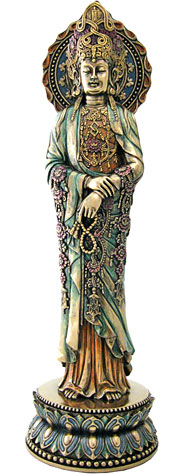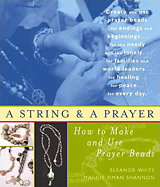Around 500 B.C., India saw the birth of Buddhism, which adopted the Hindu practice of using a mala for repeating mantras or counting breaths. As Buddhism spread to Tibet, China, and Japan, so did mala use. Like the Hindu mala, Buddhist malas are usually composed of 108 beads—or divisions of that number, 54 or 27 beads. While Burmese Buddhist monks prefer strings of black lacquered beads, malas also are made of sandalwood, seeds, stones, or inlaid animal bone. Twenty-seven-bead smaller wrist malas were created to prevent the prayer beads from touching the ground during protestations.
In Tibet, malas of inlaid bone originally included the skeleton parts of revered monks, to remind their users to live lives worthy of the next level of enlightenment. Today's bone malas are made of yak bone, which is sometimes inlaid with turquoise and coral. Buddhists also used their prayer beads as divination tools as well as for prayer.
The 108 beads represent the number of worldly desires or negative emotions that must be overcome before attaining nirvana. Buddhists believe that saying a mantra for each fleshly failing will purify the supplicant.
Buddhism » Religious Use of Beads » History of Prayer Beads » A String & A Prayer: How to Make & Use Prayer Beads
Eleanor Wiley and Maggie Oman Shannon (2007) Red Wheel/Weiser, LLC


